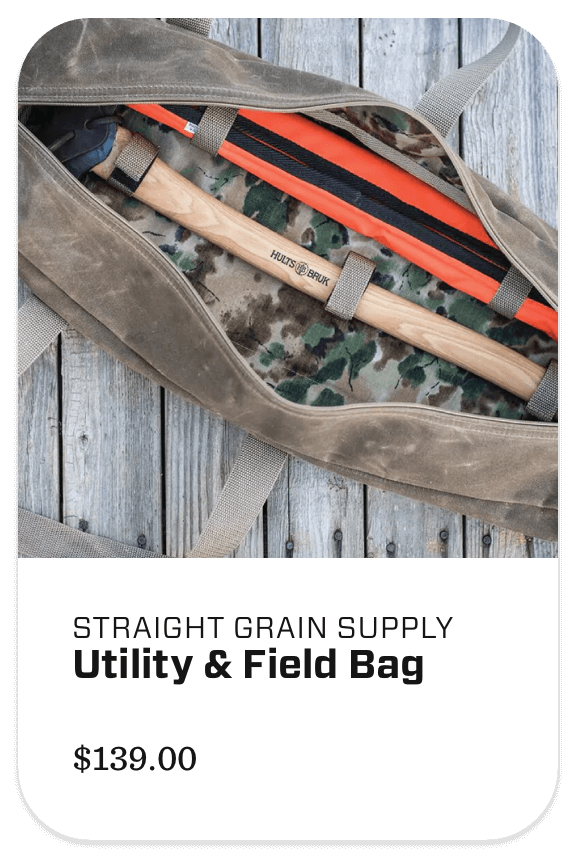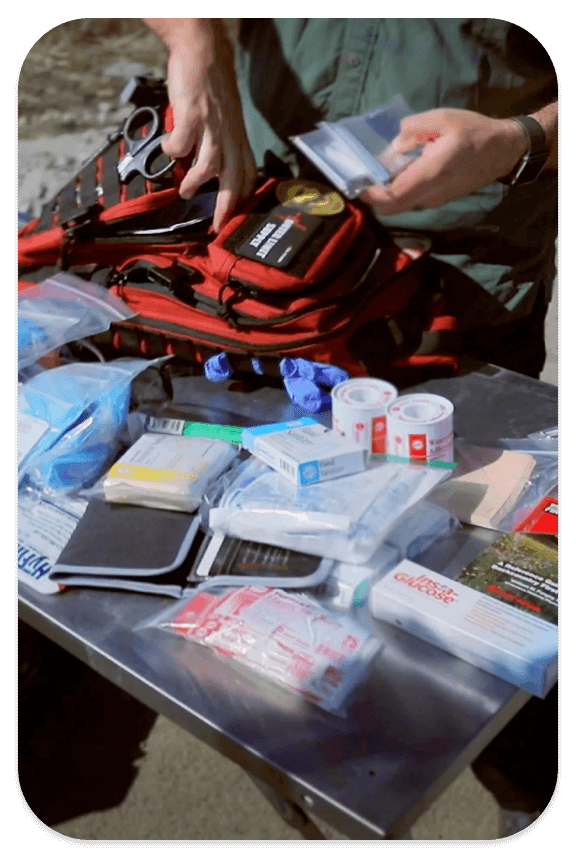Article and photos by Mercedes Lilienthal
The world of overlanding or off-road adventure is exciting, but it can also be daunting for people just getting into it. Along with outfitting your rig and planning the perfect Holiday trip, assembling a vehicle recovery kit is just as important—no matter if you’re doing 100% tarmac travel, spending time in the sand dunes, or rock crawling in the mountains. I sat down with a few industry experts to talk about recovery kit basics for the winter travel season.
Andy Lilienthal*, Strategic Communications Manager for WARN Industries, has been in the off-road industry for nearly 13 years. He’s well versed in recovery equipment, appropriate recovery techniques, and winching instruction. Over the last several years, we’ve traveled together to numerous off-road and overlanding events, hosted several yearly winching technique and recovery courses, and together own three customized 4×4 rigs.
Paul Cooper, Lead Instructor of Canada’s Overlanding BC is also a seasoned professional when it comes to vehicular recovery. He’s taught classes all over the United States and Canada, and in a variety of settings. Both Andy and Paul agree that it’s key to invest in a good basic recovery kit. Your kit should have high quality items that are appropriate for the recovery points on your vehicle and have consideration for the type of terrain and environment(s) you will be traveling.
Here are some basic items you should have in your kit.
Tree Trunk Straps
“A tree trunk protector strap should be in every recovery kit. Chains and wire ropes can damage trees during vehicle recovery. A tree protector strap allows you to make use of these natural anchors without destroying them,” says Andy. “Use a tree trunk protector as a rigging strap in combination with a screw pin shackle to secure winch rope or straps to anchor points and objects.”
Tree trunk straps, which are non-flexible or stretchable, should only be used via winching recoveries and not via a vehicle-to-vehicle recovery (as they do not allow for kinetic energy build-up, otherwise known as the “rubber band effect”). Andy also says to be sure to check the tree for rot or anything else that might not make it sufficient as an anchor point. This includes being too small or rotted out. Always place the tree strap low on the tree’s trunk, too.
Recovery Strap
A recovery strap is also important to have. A recovery strap may also be known as a kinetic energy or snatch strap—meaning the nylon webbing absorbs the shock of heavy pulls while elastic rebound energy aids in vehicle to vehicle recoveries. These types of straps “pop” a stuck vehicle out of whatever they’re stuck in. They’re incredibly effective if used correctly.
“These can save the day or can easily cause massive and serious damage to machines and people. Be sure to get some training (or at the very least online research) before you use them. Go easy and try the ‘least amount of force’ the first few attempts while recovering a stuck vehicle,” Paul mentions. These straps should never be used for winching.
Chains and Shackles
“Chains can also be very useful when on the trail (they work well when winching with a Hi-Lift jack),” Paul exclaims. “They are also great for moving unexpected obstacles off the road, like fallen trees, boulders etc. I pack a high quality 10 ft. ‘choker chain.’ The hoods are designed to positively engage the chain links. I would never use the chain for vehicle to vehicle recovery.”
A minimum of two to three screw pin shackles should be included. “These shackles get their name as they’re a bow-shaped piece of metal secured with a clevis pin or bolt across the opening, usually threaded in from one direction,” says Andy. “They are also known as bow shackles or even D-shackles although technically they aren’t D rings.”
These shackles are useful as they allow for different rigging configurations to be connected or disconnected quickly. Great for connecting winch lines or recovery straps to a stuck vehicle. “Screw pin shackles should be forged and not cast. Although cast metal is often cheaper, recovery equipment that is cast may have air pockets and bubbles within them that can compromise the product’s strength,” says Andy.
Forged items are more stable, durable, and are solid. Cast items are heated above their melting temperature and poured into a mold where they solidify. Forged items are physically forced into shape while remaining in a solid state, hence alleviating air pockets and bubbles. Paul likes WARN or Crosby shackles.
Another option, Paul states, is to have soft shackles on hand. Soft shackles are made from synthetic rope and are lightweight and easy to handle, but can be more prone to abrasion. A snatch block is an integral accessory to possess if you own a winch. Andy states that snatch blocks allow you to change the angle of your winch pull or can effectively double your winch’s pulling capacity if you were to double-line to a stuck vehicle and back to yourself. This tool creates double the pulling capacity but at half the speed.
Snatch Blocks
Snatch blocks are basically a pulley with a side that swings open. Because the side opens up, you don’t have to thread your winch cable through the opening; instead, you open the side plate, align the cable over the pulley, and then close the side plate. A snatch block has two primary functions in recovery winching. One is to change the direction of your winch cable when the anchor point is offset. The second is to increase the pulling power of your winch and cable.
Patch Kit
We don’t travel without a good tire patch kit. No matter if you’re pounding thousands of miles of pavement or adventuring in the mountains, having a good kit (that includes replacement valve accessories, tire patch materials, a good tire gauge, etc.) can mean the difference between quickly and successfully repairing an issue or waiting hours for AAA or a tow truck if you don’t have a good spare.
A good patch kit should include all the components necessary to repair tubeless radial or bias ply tires, without removing the tire from the vehicle or rim. Winching gloves (or any kind of heavy duty gloves) are beneficial when doing recovery. Not only do they save your hands from rope burn or burrs, they allow for added grip when handling recovery accessories.
Recovery products can be both bulky and heavy. Getting a heavyweight carrying bag is key. Whether you decide upon a tote bag like a Watershed waterproof duffle bag or backpack style bag like the WARN Epic Recovery kit backpack, using a durable bag is important. “A great bag to keep all of your wares together is key, so it’s all there when you need it,” says Paul.
Med Kit
Having a basic medical kit is critical. We keep two kits on hand, a customized medium-sized one we compiled whose contents are kept in a generic fishing tackle box. (Chris Solis, Overland Bound Medical Ambassador, has prepared a list with his full kit here) Adding other items to your med kit can also be beneficial.
*Editor’s Note: Andy Lilienthal is a subject matter expert and the author’s husband. No compensation was granted to any of the contributors or companies represented in product recommendations for this article; however, we may collect a share of sales or other compensation from the Amazon links on this page.






Thank you all for a good article.
However, I have some points I would put into a recovery pack.
First of all.
A Shovel.
Why? Because a lot of moments of being bogged the solution is just simple start digging.
And when you are towing, kinetic or else, and you have a “wall” in front of your tires, it is having more stress to the car.
Making a ramp with your shovel makes the recovery go lighter.
When in shallow water, try to let the water flow away. Therefor easier acces to the reason of getting bogged.
Recovery boards.
Very important as they make again a recovery possible or at least much lighter.
Especially when you out on your own.
And most importantly!!!!
Patience, a good view, a plan, and no rush if possible.
I did once a recovery on my own, with winch, shovel, and such and due the fact that I made the whole situation relaxed, I managed on my own without any problems, and damage to the Rig what so ever.
Think we should need a recovery lesson in Europe. At least once a year. Just to keep in good shape.
excellent write up!!
I’m not sure all those products are a requirement but the article hits the plusses, and pitfalls of picking the wrong ones. I live in the forest and I don’t overland in the third world so my needs are simpler. Something to always consider before building that must have list??? Where are you, what do you need? AND it misses “what if you don’t have a splint for a broken forearm”…. Include courses in First Aid, Recovery, Swimming, CPR !!!! Beyond spending on products…. Spend on EDUCATION, get experience.
These are recovery basics and not “third world” overlanding equipment. If you don’t off-road with these that is your choice, but these are the basics that anyone traveling off road should have with them.
It’s also not a first aid list. That need was addressed very clearly under “Medical Kit”.